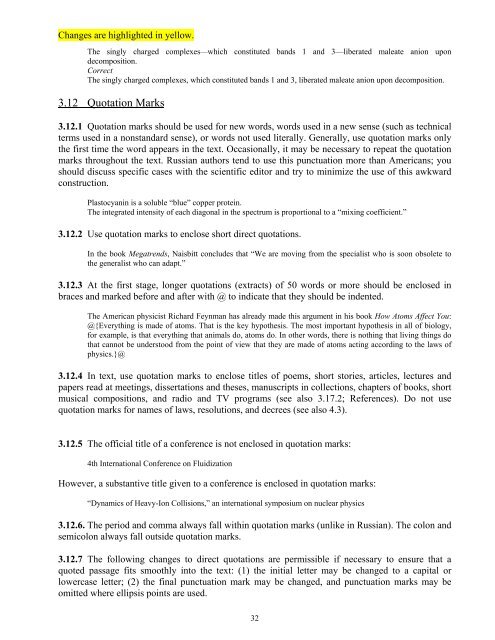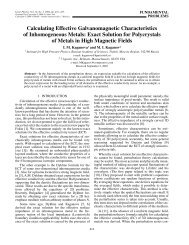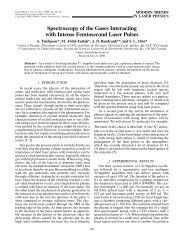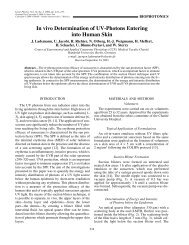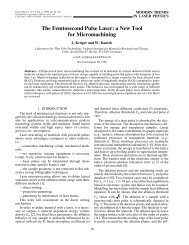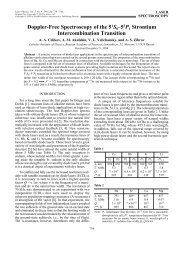House Style Guide 2011 - MAIK "Nauka/Interperiodica"
House Style Guide 2011 - MAIK "Nauka/Interperiodica"
House Style Guide 2011 - MAIK "Nauka/Interperiodica"
- TAGS
- maik
- www.maik.ru
You also want an ePaper? Increase the reach of your titles
YUMPU automatically turns print PDFs into web optimized ePapers that Google loves.
Changes are highlighted in yellow.<br />
The singly charged complexes—which constituted bands 1 and 3—liberated maleate anion upon<br />
decomposition.<br />
Correct<br />
The singly charged complexes, which constituted bands 1 and 3, liberated maleate anion upon decomposition.<br />
3.12 Quotation Marks<br />
3.12.1 Quotation marks should be used for new words, words used in a new sense (such as technical<br />
terms used in a nonstandard sense), or words not used literally. Generally, use quotation marks only<br />
the first time the word appears in the text. Occasionally, it may be necessary to repeat the quotation<br />
marks throughout the text. Russian authors tend to use this punctuation more than Americans; you<br />
should discuss specific cases with the scientific editor and try to minimize the use of this awkward<br />
construction.<br />
Plastocyanin is a soluble “blue” copper protein.<br />
The integrated intensity of each diagonal in the spectrum is proportional to a “mixing coefficient.”<br />
3.12.2 Use quotation marks to enclose short direct quotations.<br />
In the book Megatrends, Naisbitt concludes that “We are moving from the specialist who is soon obsolete to<br />
the generalist who can adapt.”<br />
3.12.3 At the first stage, longer quotations (extracts) of 50 words or more should be enclosed in<br />
braces and marked before and after with @ to indicate that they should be indented.<br />
The American physicist Richard Feynman has already made this argument in his book How Atoms Affect You:<br />
@{Everything is made of atoms. That is the key hypothesis. The most important hypothesis in all of biology,<br />
for example, is that everything that animals do, atoms do. In other words, there is nothing that living things do<br />
that cannot be understood from the point of view that they are made of atoms acting according to the laws of<br />
physics.}@<br />
3.12.4 In text, use quotation marks to enclose titles of poems, short stories, articles, lectures and<br />
papers read at meetings, dissertations and theses, manuscripts in collections, chapters of books, short<br />
musical compositions, and radio and TV programs (see also 3.17.2; References). Do not use<br />
quotation marks for names of laws, resolutions, and decrees (see also 4.3).<br />
3.12.5 The official title of a conference is not enclosed in quotation marks:<br />
4th International Conference on Fluidization<br />
However, a substantive title given to a conference is enclosed in quotation marks:<br />
“Dynamics of Heavy-Ion Collisions,” an international symposium on nuclear physics<br />
3.12.6. The period and comma always fall within quotation marks (unlike in Russian). The colon and<br />
semicolon always fall outside quotation marks.<br />
3.12.7 The following changes to direct quotations are permissible if necessary to ensure that a<br />
quoted passage fits smoothly into the text: (1) the initial letter may be changed to a capital or<br />
lowercase letter; (2) the final punctuation mark may be changed, and punctuation marks may be<br />
omitted where ellipsis points are used.<br />
32


